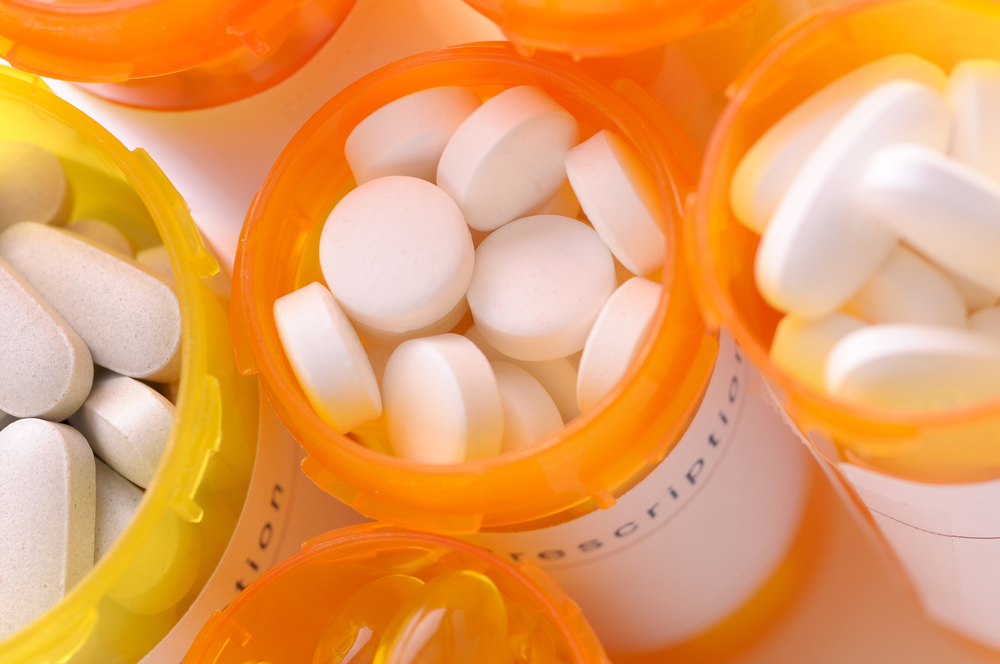How seriously do you take the warnings on your prescription drug bottles?
If you happen to pop painkillers on an empty stomach, or throw back (just) one glass of wine even though your doctor recommended otherwise while taking a round of antibiotics—you might be jeopardizing your health.
Here are seven medication warnings you never want to ignore…
1. Taking Drugs Without Eating
If you pop your arthritis medication (i.e., Naproxen) before taking a bite of your bagel, you could be doing more than giving yourself a nasty tummy ache. Pharmacists will often remind those filling prescriptions for non-steroidal anti-inflammatory drugs (NSAID), and even buying over-the-counter ibuprophen, to take with food for good reason. While food often acts as a defensive barrier between acidic meds and your tender stomach lining—many drugs also require small amounts of fat for effective absorbency and full potency.
2. Medication and Sun Exposure
Pharmacists at Bouvé College of Health Sciences, at Northeastern University, warn that even 15-minutes of exposure to the hot sun (or a tanning bed) when taking antibiotics or diabetes medication can leave you covered in a nasty burn or a red, itchy rash. Medications with photosensitizing characteristics can cause a localized immune response, especially in light skinned individuals, causing a delayed photo-allergic reaction, usually within 24 hours of taking the first dose of medication.
3. Licorice with Medication
If you take HCTZ blood pressure medication to treat hypertension, the warning label on your pill bottle may include a strict warning against glycyrrhizin, a prevalent ingredient in sweeteners, herbal teas, and even black licorice root. According to the U.S. Food and Drug Administration (FDA), glycyrrhizin can interact with heart rhythm medication causing potassium levels to drop and placing your heart at risk of fatal cardiac arrhythmia.
4. Mixing Adverse Drugs
Many medications and prescription-supplement mixtures can be dangerous. In fact, the Pennsylvania-based Institute for Safe Medication Practices, points to several adverse medication combinations—such antibiotics and oral contraceptives (the former reduces the effectiveness of the latter), painkillers and supplements (many of which are not approved by the FDA and carry unknown side effects), and blood thinners (i.e., Coumadin) taken with aspirin, a combo that can interfere with clotting and increase your chance of internal bleeding. This is why it’s important to use the same pharmacy to fill prescriptions and alert your doctor to all medications and supplements you are taking.
5. Grapefruit and Other Citrus
An innocent half grapefruit or a glass of grapefruit juice at breakfast is perfectly healthy—unless you happen to be taking one of roughly 80 drugs that the fruit interacts adversely with. The UK’s National Health Service and the Canadian Medical Association Journal maintain that grapefruit contains furanocoumarins, chemical compounds that mess with the body’s ability to break down and process certain drugs, leaving you with excessive or limited amounts of the drug in your body. Keep in mind that other citrus fruits contain furanocoumarins (i.e., pomelos, limes, and Seville oranges).
6. Mixing Drugs and Alcohol
Mixing drugs and alcohol is never a good idea. However, the National Institute on Alcohol Abuse and Alcoholism says that drinking when taking antibiotics, anti-anxiety medications (i.e., Valium or Xanax), or even over-the-counter pain relievers (i.e., acetaminophen) can cause nausea, extreme drowsiness, fainting, breathing troubles, heart problems, and liver damage. Worse still, long term abuse of mixing drugs and alcohol can lead to organ failure.
7. Dosage Compliance
The most recent statistics from the Institute of Medicine claim that 1.5 million Americans (predominantly seniors) are harmed by medication errors each year due to forgetfulness, misunderstanding, and financial constraint. Even over-the-counter pain relieves (i.e., acetaminophen) can pose a risk to your liver if you take too much, which is why its vital to real medication labels fully and comply exactly with the instructions or your doctor’s recommendations.










